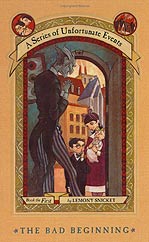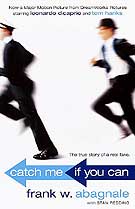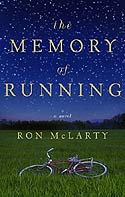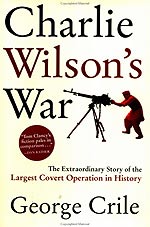“It’s not Disney,” explained one child upon being asked why he liked Lemony Snickett’s dark and dismal Series of Unfortunate Events. Kids seem to love this book series about the three Baudelaire children – Violet, Klaus, and Sunny – whose parents died tragically in a fire and who spend most of their time trying to evade the evil Count Olaf, a master of disguises who plots to steal the orphan’s fortune. Violet is the oldest with a knack for inventing, Klaus the younger boy who loves to read and study, and Sunny, the baby with 4 exceptionally strong and sharp teeth. The books in the series have predictable plots. In each, Mr. Poe, the Baudelaire’s hapless executor, appoints a guardian who is often a distant relative of the children who proves to be incapable of keeping Count Olaf away. The adults in the stories are all fooled by the Count’s disguises and don’t listen to the children who are never fooled. It’s up to Violet, Klaus, and Sunny to figure out the Count’s nefarious plan before he can implement it and abscond with the children. It always takes the three kids working together to foil the Count’s plans.
Catch Me If You Can – Frank Abagnale
Catch Me If You Can by Frank Abagnale is an amazing true story of the adventures of a master con artist and check forger. Of all the books I’ve “read” from Audible.com, this is among the most enjoyable. In his late teens, Abagnale posed as a PanAm co-pilot, getting lifts on airplanes for free to take him all around the country and the world, allowing him to pass bad checks behind the guise of a respectable airline pilot. By the time he was caught, at age 21, he had managed to bilk his victims, mostly PanAm, of over 2 million dollars. At that was 2 million in the late 60s, when the story took place. Posing as Frank Williams, Robert Conrad, Frank Adams, and Robert Monjo, Abagnale also managed to teach sociology at a college in Utah with a fake diploma, pass the bar exam and work in an attorney general’s office, pose as a pediatrician and become a temporary resident supervisor at a hospital in Georgia.
The Memory of Running – Ron McLarty
Smithy Ide is a 43 year old drunk – overweight, friendless, and when he can think, disgusted with himself. After the funeral of his parents who die in a car accident, Smithy finds an unopened letter to his parents from a mortuary in California. The letter says that the mortuary is holding the body of Smithy’s sister Bethany, an indigent whose identity they’ve been able to match with dental records. Still in a drunken fog, Smithy finds his old Raleigh bike in their garage, and sets off down the road, flat tires as all. Thus he unintentially sets off on a bike journey across the country and in the process comes to terms with his life and the loss of his beautiful sister who couldn’t escape the voices in her head.
Charlie Wilson’s War – George Crile
September 11th made it clear that thousands of Afghans that we had armed and trained had become terrorists with the US now in their sights. How did Afghanistan become a training ground for terrorists? George Crile’s Charlie Wilson’s War is the story of how one man, U.S. Congressman Charlie Wilson, Rep. Texas, almost single-handedly launched the several billion dollar CIA operation in Afghanistan to force out the occupying Soviets, without a vote in Congress, and without the clear approval of the President. What started as barely a nuisance campaign turned into the greatest covert operation in CIA history.
Shah of Shahs – Ryszard Kapuscinski
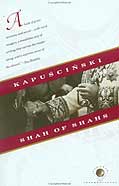
In Shah of Shahs Polish journalist Ryszard Kapuscinski turns his focus to the former Shah of Iran, the CIA supported dictator whose oppressive regime led to the revolution that took Americans hostage in their own embassy, caused the shah’s exile, and resulted in the fundamentalist Islamic government that runs Iran today. Kapuscinski published this book in 1982, just a few years after the revolution. In his unique style Kapuscinski weaves history, stories of individuals, and his own observations and interpretations.
It seems as if in every oppressive regime, there is a police authority, a spy network that detains and tortures anyone suspected of not being loyal to the ruling regime. In Iran, that group of thugs was the Savak.
Vengeance and Being Born Again
Tonight at dinner I was reflecting with my father how vengeance seemed to be such a driving force in the world. I’ve just finished reading “Charlie Wilson’s War” about how US Rep. Charlie Wilson had almost single handedly procured billions of dollars of appropriations money to fund the Afghan rebels fighting the Soviets who were occupying their land. To Charlie it didn’t matter that tens of thousands of young Russian men were being sent home to their mothers in body bags, often after brutalizing deaths at the hands of the Afghans. To him it was revenge for Vietnam and the Soviet-backed North Vietnamese. For Gust Avrakotos, Charlie’s Greek colleague in the CIA, his actions were also motivated strongly by revenge, part of his Greek heritage. The Afghans were brutal to the Soviets they caught – raping them, skinning them alive, etc., all for revenge.
I once read a book called, “Don’t Get Mad, Get Even.” Very funny book, a light-hearted and creative approach to keeping oneself from petty victimization. Moral – if you attempt to cheat me, I will cause you public humiliation until you back off. Not so bad of a message; it’s how we as a culture keep people in line, keep individuals from making life difficult for all of us.
But some people are really driven by vengeance, people who go through life spending their time looking for ways to mess up other people’s lives for wrongs both real and imagined.
I don’t experience this kind of vengeance. And although I would probably like to believe that this is because I’m a good person, it’s probably more a result of never being deeply hurt. It used to be when I was hurt by someone, for example a “man who done me wrong”, I would be very sad for a long time. As I’ve grown older I’ve discovered the healing properties of anger. I get angry, I create a wall shutting the cause of pain out. Eventually the anger dissolves. I let go, get on with my life, and ignore the parts that ever caused pain. But vengeance is something else, beyond anger to protect, it’s anger directed to hurt or destroy. It’s planned; it’s methodical; it can last a lifetime.
